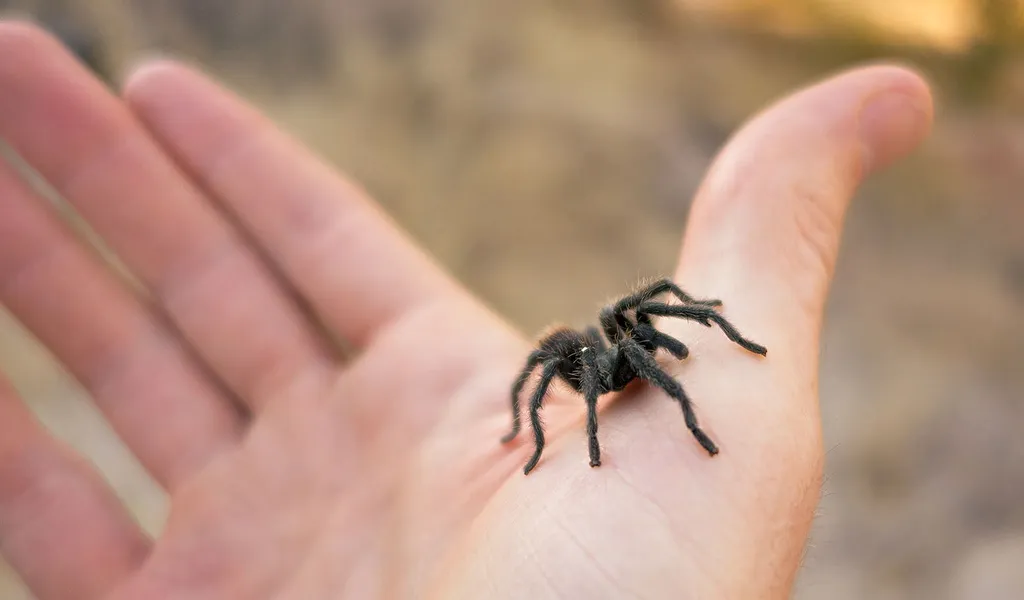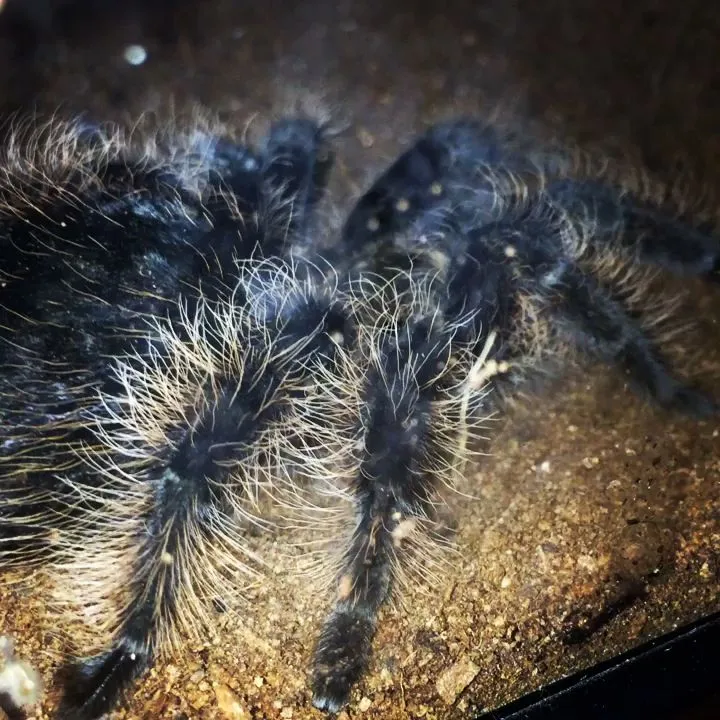Tarantula Recognition Top 5 Facts
Owning a tarantula can be a fascinating experience. These captivating arachnids bring a unique dimension to the world of pets. But a common question among tarantula enthusiasts is, can a pet tarantula recognize you? While they may not experience the world in the same way as a dog or cat, tarantulas possess a range of sensory capabilities that influence their interactions with their environment, including their human companions. Understanding how tarantulas perceive their surroundings provides insight into their behavior and helps in developing a more meaningful connection with your eight-legged friend. This article will explore five key facts about tarantula recognition, shedding light on their sensory perception, learning abilities, and how they interact with their environment.
Fact 1 Vision Limitations of Tarantulas
The visual world of a tarantula is quite different from our own. Their eyesight, although present, is not their primary sense. Tarantulas have multiple eyes, usually eight, arranged around their carapace. However, these eyes are not designed for detailed vision. Their eyesight is primarily used to detect movement, shadows, and changes in light intensity. They have poor depth perception and cannot see fine details or colors. Therefore, a tarantula is less likely to ‘recognize’ you based on your appearance. Instead, they rely more on other senses to interact with their world, like vibrations and scents. Understanding their vision limitations is critical to comprehending their perception of their surroundings and their interactions with you and other stimuli in their environment. While they might not distinguish your face from another, the movement you make can be instantly registered as a possible threat or a potential food source.
How Tarantulas See the World

Tarantulas perceive the world through a mosaic of simple images, primarily detecting changes in light and movement. Their multiple eyes give them a wide field of view, helping them spot potential threats or prey from various angles. However, the images they see are blurry, and they lack the sophisticated visual processing capabilities of animals with more advanced vision. This means your tarantula is unlikely to recognize your face or the details of your appearance. When you approach their enclosure, they are more likely to detect your presence through the shadows and movement, rather than distinct facial features. This also explains why sudden movements can startle them, triggering a defensive posture. Overall, their world is a simpler visual experience, with movement and shadows taking precedence over detail.
Fact 2 Sensory Perception Beyond Sight
Beyond their limited vision, tarantulas possess a highly developed array of other senses that play a crucial role in how they experience their environment. Key among these are their ability to detect vibrations, which are extremely useful for hunting and avoiding danger. They have sensitive hairs, called setae, on their legs and body that detect vibrations in the air and ground. This means that your tarantula may perceive your presence through the vibrations of your footsteps or the movement of your hands near their enclosure. This ability to sense vibrations helps them detect potential threats, as well as the approach of a meal. The tactile sensory input is also very important to a tarantula, and it plays a role in communication and interaction. These sensory perceptions allow tarantulas to experience and understand their world in ways far beyond their eyesight.
The Role of Vibration in Tarantula Awareness
Vibrations are a vital sense for tarantulas. They use them to navigate their environment, detect prey, and identify potential dangers. As you walk around your home, your tarantula can sense the vibrations through the substrate of its enclosure, and in this way, you are not necessarily invisible to it. Tarantulas are also sensitive to airborne vibrations, like the sound of your voice, though they don’t ‘hear’ sounds in the same way as humans. The vibration of your voice may create a sensation, allowing them to recognize the sound. The awareness based on vibration is a central component of the spider’s perceptual world. Therefore, the careful approach and gentle movements near the enclosure are often recommended when interacting with your pet tarantula.
Fact 3 The Learning Abilities of Tarantulas

Contrary to common belief, tarantulas are not entirely incapable of learning. While their cognitive abilities are limited compared to mammals, they are capable of associative learning. This means they can learn to associate certain stimuli with positive or negative experiences. For example, a tarantula that consistently receives food when its enclosure is opened might come to associate the opening of the enclosure with feeding time. They may also learn to associate certain smells or environmental cues with specific outcomes. These learning processes are more basic than those of mammals, but they can influence their behavior. This allows tarantulas to adjust their behavior based on prior experiences, allowing them to adapt to their environment. This is a critical feature, and it demonstrates a simple form of tarantula recognition.
Can Tarantulas Learn to Associate?
Tarantulas can indeed learn through association, and it is one of the primary ways they adapt to their environment. Through repeated experiences, they can connect specific stimuli with either positive outcomes (like feeding) or negative outcomes (such as a sudden threat). The ability to associate allows them to predict and respond to various situations. For example, a tarantula might learn to associate the approach of its owner with food, and show more tolerance or come out of hiding when it sees you. Conversely, if they frequently experience disturbance, such as enclosure changes, they might become more likely to hide or exhibit defensive behaviors when you approach. The learning process relies on a combination of scent, vibration, and environmental conditions, and it’s a key aspect of understanding tarantula behavior. It’s important to keep a consistent routine and positive experience to promote trust and recognition.
Fact 4 Identifying Familiar Faces Scent or Signals
Since tarantulas can’t see very well, they rely heavily on other senses to identify their environment. Scent plays a major role, and tarantulas can ‘recognize’ familiar scents. They have chemoreceptors on their legs and mouthparts that detect chemical signals in their surroundings. This allows them to identify familiar smells, including the scents of their owners or other animals in the household. Over time, your tarantula can learn to associate your scent with its environment. This doesn’t mean they know you in the same way a dog knows its owner, but they can distinguish your scent from others. They also use vibrational cues and the overall environmental conditions as part of their perception of you. This ability to process multiple sensory inputs allows them to build a unique ‘signature’ that helps them understand their surroundings.
The Significance of Chemical Communication

Chemical communication is crucial for tarantulas. It involves the use of pheromones and other chemicals that provide information about the environment, including the presence of other animals or humans. When you handle your tarantula, you leave your scent on its body and in its enclosure. This familiar scent can serve as a signal for your tarantula, and repeated exposure can build an understanding of your presence. In addition to scent, environmental cues, such as the location and overall condition of the enclosure, are used in the recognition process. These chemical signals are an important part of their world. They help with everything from identifying potential mates to detecting the presence of predators. Therefore, it is more about recognizing the overall environment and the chemical signature.
Fact 5 Understanding Tarantula Behavior and Personality
Observing your tarantula’s behavior provides insight into how it perceives you and its surroundings. Different individuals have distinct personalities, and their reactions can vary based on species, age, and past experiences. Some tarantulas are docile and tolerate handling, while others are more defensive and likely to hide. By carefully watching your tarantula, you can understand its individual preferences and learn to interpret its behaviors. Pay attention to its posture, movement, and any changes in its routine. This can provide clues about its comfort level and how it responds to your presence. Understanding their body language will help you. Whether or not your pet tarantula recognizes you, learning their particular signals leads to a better relationship and increases your appreciation for your pet. It can be fascinating to watch their behaviors and responses to different stimuli, which will give you an appreciation for these amazing creatures.
Interpreting Movements and Signals
Tarantulas communicate through a combination of body language and subtle signals. While they don’t ‘speak’ in a conventional way, they display behaviors that can indicate their mood or intention. For instance, a tarantula that is relaxed and comfortable will often sit still. It may show its appetite, or move slowly. Conversely, a defensive tarantula may rear up, display its fangs, or flick hairs from its abdomen (a defense mechanism). Observing these subtle movements and signals will help you understand your tarantula’s comfort levels and how it perceives you. By learning to interpret these signs, you can adapt your interactions to ensure the well-being and safety of your pet, as well as enhance the bonding experience. As you get to know your tarantula, you’ll become adept at understanding their individual behaviors and preferences.
